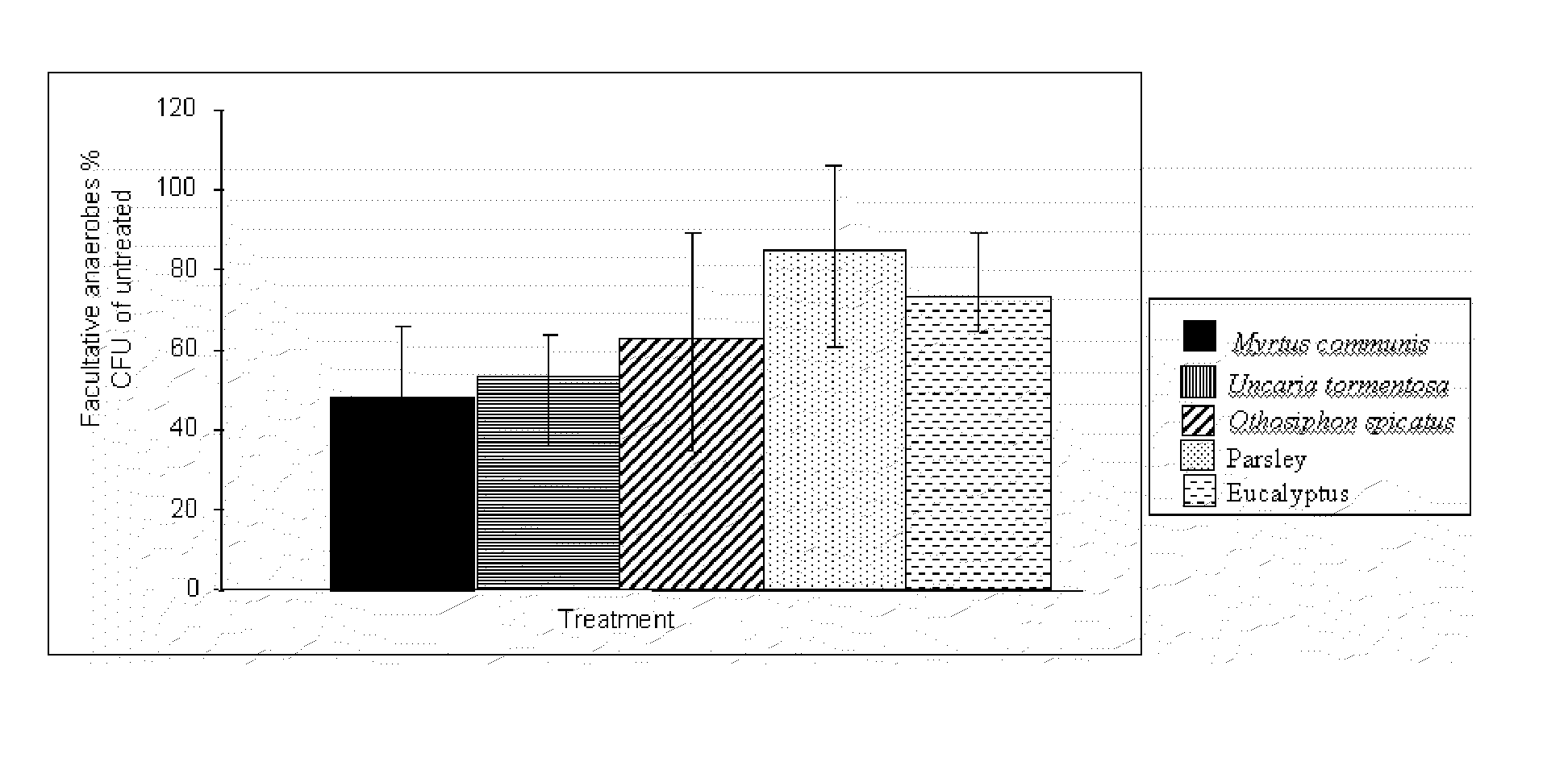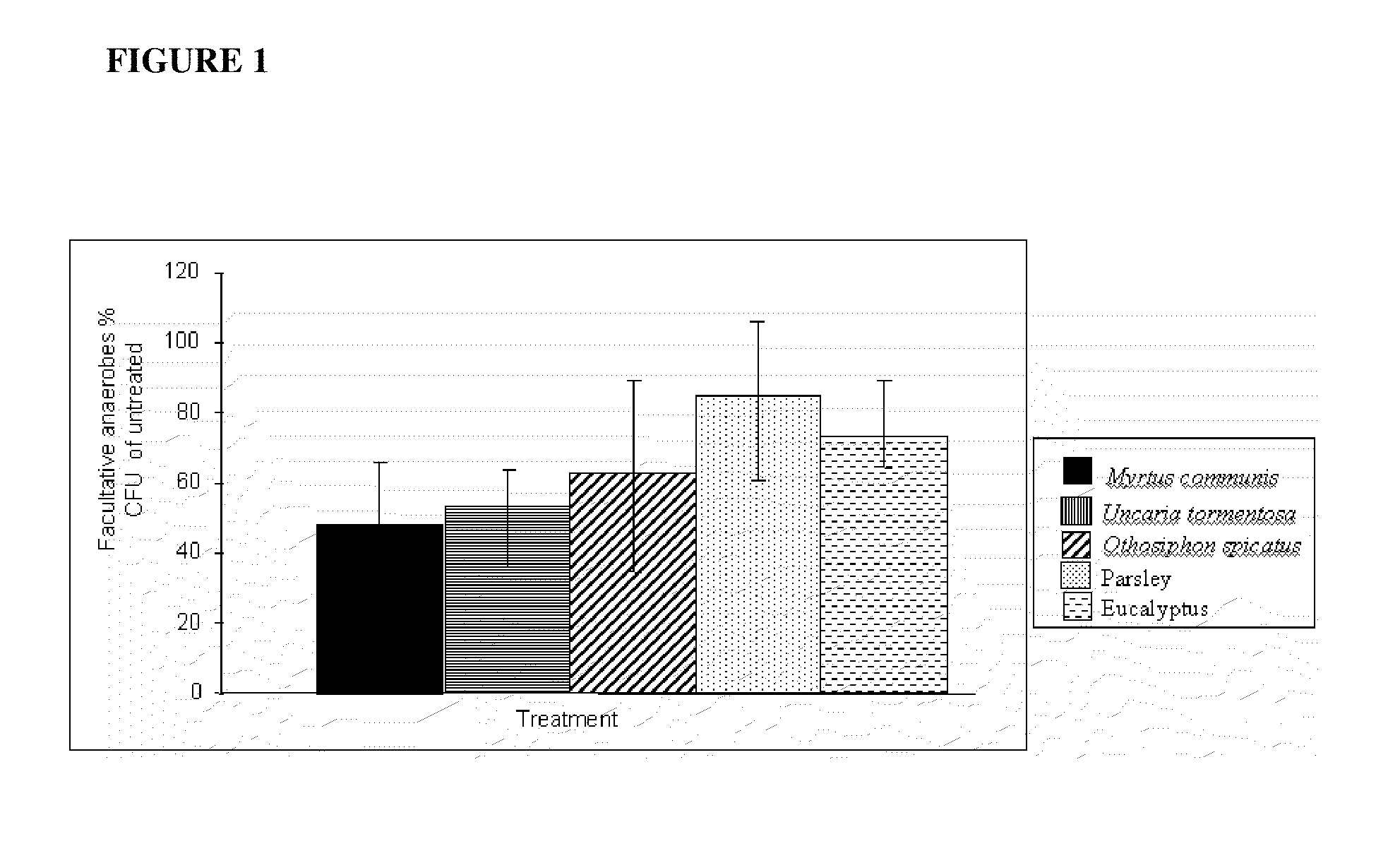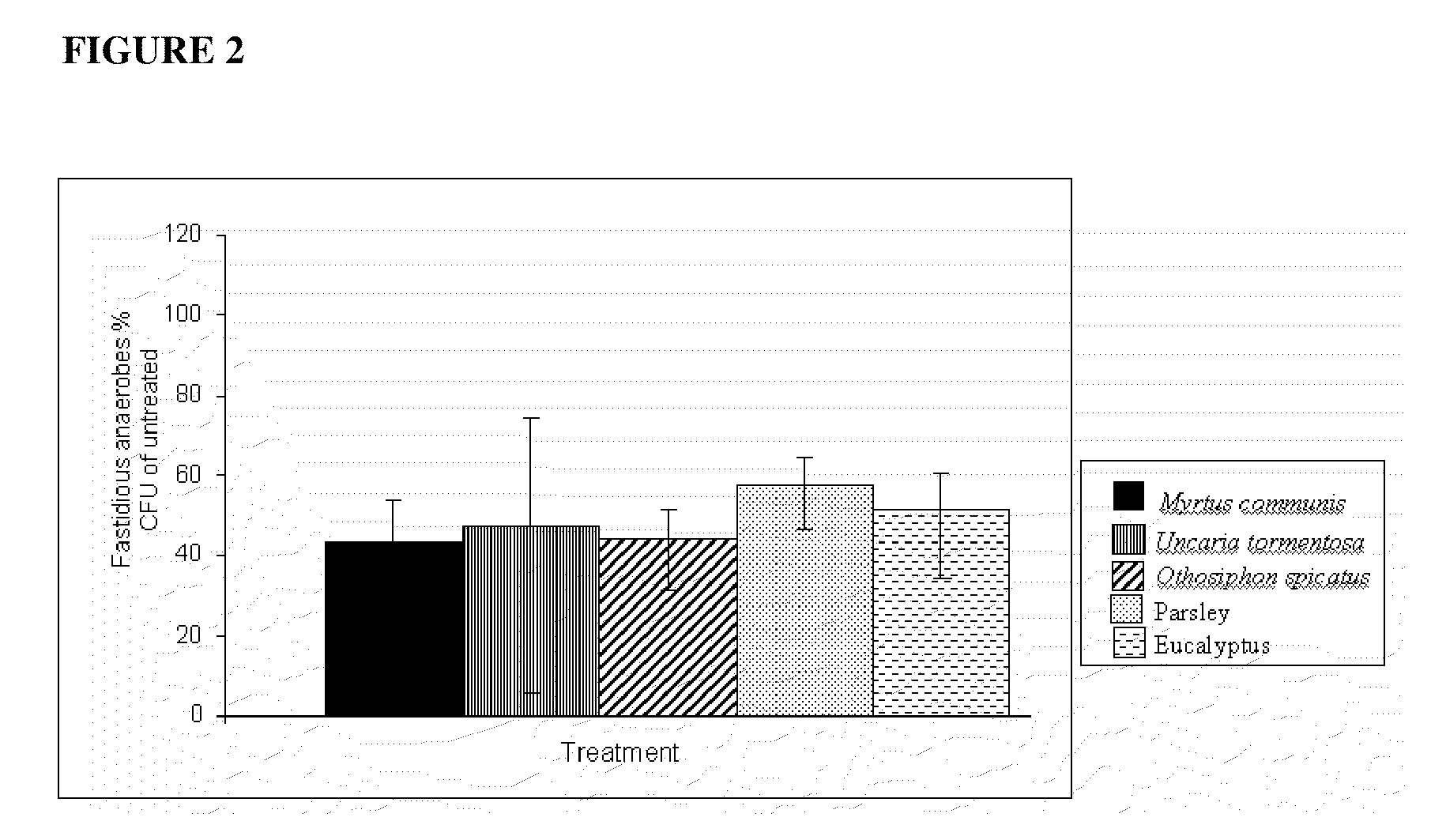Oral hygiene composition comprising myrtle
a technology of oral hygiene and myrtle, which is applied in the field of myrtle, can solve the problems of severe effects on the wellbeing of animals, gum disease (gingivitis, tooth loss, etc.), and achieve the effects of improving or maintaining oral health in animals, reducing the destructive effect of certain plaque bacteria, and maintaining oral health
- Summary
- Abstract
- Description
- Claims
- Application Information
AI Technical Summary
Benefits of technology
Problems solved by technology
Method used
Image
Examples
example 1
[0068]Initial assays were set up to determine whether myrtle is suitable for use in an animal for improving or maintaining oral health.
[0069]These assays include the ability to inhibit adhesion of plaque forming bacteria, inhibit growth of oral bacteria, inhibit protease production in oral bacteria and inhibit haemolysis caused by oral bacterial strains.
[0070]Myrtle inhibited adhesion by up to 100%, growth by up to 93%, protease production by up to 57% and showed the ability to inhibit haemolysis in 5 out of 8 oral bacterial strains tested.
[0071]These results showed that myrtle has the ability to inhibit undesirable oral bacteria and therefore it was tested in further assays for its ability to maintain or improve oral health in an animal.
example 2
Assay Inoculum: Plaque and Saliva Sampling from Dogs
[0072]The assay requires fresh supragingival canine dental plaque and saliva for inoculation. The inoculum consists of pooled dental plaque and unfiltered saliva sampled from a group of 14 dogs, varying in age, breed and oral health status.
[0073]The plaque and saliva were resuspended in artificial saliva to form the inoculum of approximately 15% plaque and 30% saliva.
Assay Set-Up
[0074]The plate biofilm assay (PBA) utilises a 24 well plate format in which biofilms, representative of canine dental plaque, are grown on hydroxyapatite (HA) discs. Prior to being introduced to the 24 well assay plate, each HA disc is preconditioned for 2 hours in a solution of 50% filter sterilised canine saliva in artificial canine saliva. The preconditioning step stimulates the formation of a salivary pellicle on the HA disc surface. Following preconditioning, each HA disc is placed individually into a well on the 24 well plate. The inoculum is divided...
example 3
Myrtle Extracts Tested in the PBA
[0075]A methanol extract of myrtle was used for testing in the canine PBA. Extractions were performed as described previously.
[0076]The raw botanical of myrtle leaf was tested against clove (dried flower buds), parsley (leaf) and eucalyptus (leaf) in the canine PBA at 500 μg / ml and 5000 μg / ml. Myrtle shows an improved performance over parsley and eucalyptus in protease and biomass inhibition at both 500 μg / ml and 5000 μg / ml. Myrtle performs as well as clove in black pigmenting colony and protease inhibition at 5000 μg / ml.
[0077]In addition, chlorhexidine (Lloyds Pharmacy) was included as the gold standard reference or positive control. However, chlorhexidine is undesirable for use in animal compositions since it is a synthetic chemical and may have potential toxic effects as it is a chemical used in its purest form.
PUM
 Login to View More
Login to View More Abstract
Description
Claims
Application Information
 Login to View More
Login to View More - R&D
- Intellectual Property
- Life Sciences
- Materials
- Tech Scout
- Unparalleled Data Quality
- Higher Quality Content
- 60% Fewer Hallucinations
Browse by: Latest US Patents, China's latest patents, Technical Efficacy Thesaurus, Application Domain, Technology Topic, Popular Technical Reports.
© 2025 PatSnap. All rights reserved.Legal|Privacy policy|Modern Slavery Act Transparency Statement|Sitemap|About US| Contact US: help@patsnap.com



